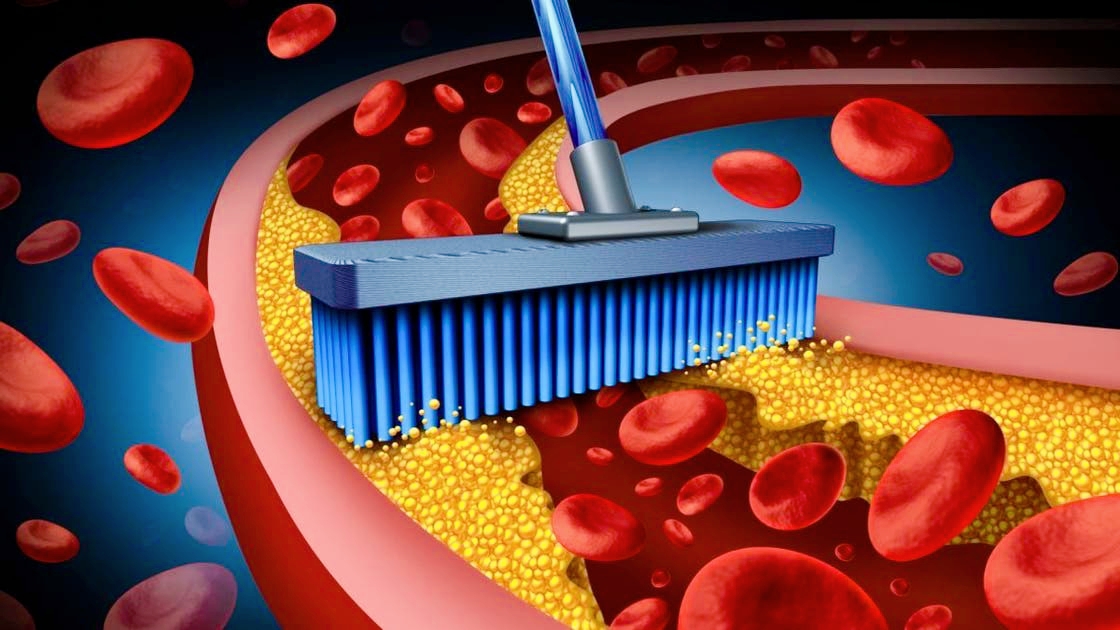Recognizing High Cholesterol: Key Signs and Prevention Strategies

Cholesterol is an essential fatty substance that plays a vital role in building cell membranes and producing important hormones in the body.
However, elevated cholesterol levels in the bloodstream can significantly increase the risk of heart disease, strokes, and other serious health complications by narrowing arteries.
This rise in cholesterol often occurs without noticeable symptoms, making it essential to identify early warning signs and causes to maintain overall health.
* 5 Warning Signs of High Cholesterol
1 _ Fatty Deposits Around the Eyes
Visible bumps or spots on the skin, known as "xanthomas," may appear around the eyes, elbows, or knees, along with a light-colored ring around the iris (arcus senilis), indicating cholesterol accumulation.
2 _ Chest Pain or Angina
Fatty plaque buildup in the arteries can restrict blood flow to the heart, causing sensations of pressure, tightness, or burning during physical activity or stress, which may lead to a heart attack if left unaddressed.
3 _ Persistent Leg Pain
Blocked arteries supplying blood to the legs can result in feelings of heaviness, burning, or fatigue during walking or exercise, a condition known as peripheral artery disease (PAD).
4 _ Dupuytren's Contracture in the Hand
Contraction of tendons in the ring and little fingers towards the palm, which limits movement, may indicate high cholesterol or hereditary lipid disorders.
5 _ Constant Fatigue and Shortness of Breath
Narrowed arteries can reduce oxygen delivery to muscles and organs, leading to unusual fatigue and shortness of breath even with minimal exertion.
* Causes of High Cholesterol
Recognizing the warning signs is important, but understanding the causes of high cholesterol is crucial for prevention.
1 _ Poor Nutrition
Dietary choices high in saturated and trans fats, including fatty meats, full-fat dairy products, fried foods, and processed sweets, can elevate levels of low-density lipoprotein (LDL) cholesterol.
2 _ Lack of Exercise
Regular physical activity raises levels of high-density lipoprotein (HDL) cholesterol, which helps clear bad cholesterol from the bloodstream. A sedentary lifestyle can contribute to cholesterol buildup.
3 _ Genetic Factors
Genetic predispositions, such as familial hypercholesterolemia, can lead to high cholesterol levels, as the body may struggle to eliminate LDL cholesterol from an early age.
4 _ Other Health Issues
Conditions like diabetes, hypothyroidism, chronic liver and kidney diseases, and autoimmune disorders can disrupt fat and cholesterol metabolism in the body.
5 _ Smoking
Smoking lowers levels of HDL cholesterol while raising LDL cholesterol levels, contributing to the buildup of fatty plaques in the arteries.
* In Conclusion
High cholesterol can develop without noticeable symptoms, but its impact on heart and vascular health can be severe if not detected early. Recognizing warning signs and adopting a healthy lifestyle—such as maintaining a balanced diet, engaging in regular exercise, quitting smoking, and attending routine medical check-ups—are vital steps for preventing complications.
Implementing these measures can significantly enhance cardiovascular health and mitigate future risks.
